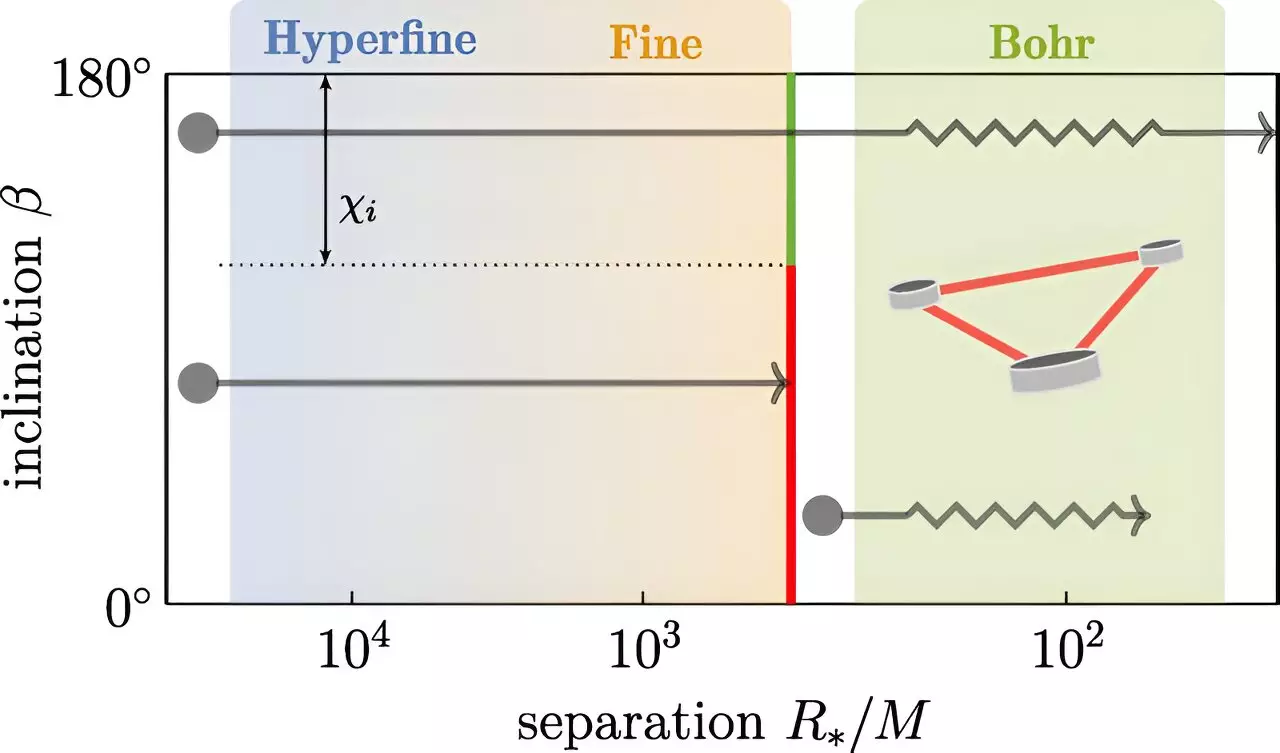Recent research published in *Physical Review Letters* has shed light on a fascinating intersection between astrophysics and particle physics, delving into the potential discovery of new particles through the study of merging black holes. This groundbreaking study, carried out by a collaborative team from the University of Amsterdam and Niels Bohr Institute, emphasizes the significance of gravitational waves emitted during black hole mergers. These waves carry detailed information that could not only enhance our understanding of gravitational phenomena but also lead to the identification of previously unknown particles.
The research is spearheaded by physicists Giovanni Maria Tomaselli and Gianfranco Bertone from the University of Amsterdam, along with former UvA student Thomas Spieksma. Their work integrates findings from six years of meticulous studies that have explored the subtle but crucial dynamics involved in black hole pair mergers. The study posits that these cosmic events may ultimately reveal evidence of new ultralight bosons—particles theorized to exist but not yet confirmed by experimental data.
Gravitational waves are ripples in spacetime that occur when massive celestial bodies, such as black holes, collide and merge. Each merger emits a unique signal that can illuminate aspects of the event’s mechanics, particularly the orbital characteristics of the black holes involved. One of the intriguing mechanisms highlighted in this research is black hole superradiance—a phenomenon where a rapidly spinning black hole ejects mass into a surrounding “cloud” of particles. This interaction results in what the researchers have dubbed a “gravitational atom,” drawing parallels to electron clouds surrounding atomic protons.
The relevance of superradiance emerges particularly when considering ultralight bosons. These hypothetical particles possess masses considerably smaller than those known and accounted for in contemporary physics, and their potential existence could resolve longstanding questions within the realms of astrophysics, cosmology, and particle physics. Studying how these particles interact with black hole dynamics provides a unique vantage point for researchers hungry for a deeper understanding of the universe’s underlying structure.
Over the years, researchers have discovered notable phenomena relating to the cloud of particles surrounding a spinning black hole, particularly resonant transitions and ionization effects. The former refers to the cloud’s ability to transition between different energy states, analogous to how electrons shift orbits in an atom. Ionization involves the ejection of part of this cloud, both effects potentially leaving signatures on the gravitational waves emitted during a black hole merger.
These newfound dynamics offer a promising avenue for detecting new particles. The study suggests that different evolutionary pathways could lead to discernible outcomes in the gravitational wave signals. For instance, if the cloud survives in its original state after the merger, it may provide unique ionization signatures in gravitational waveforms. Conversely, if resonant transitions occur, the cloud could be entirely annihilated, leading to observable patterns in orbital eccentricity and inclination.
The research culminates in an innovative search strategy for potential new particles, presenting a two-pronged approach to detection. First, upcoming gravitational wave observations may enable scientists to identify ionization effects that signal the presence of ultralight bosons. Secondly, unusual distributions of binary systems exhibiting specified values of eccentricity and inclination could serve as additional indicators of such particles.
As the field of gravitational wave astronomy progresses and the sensitivity of detection instruments increases, the possibility of uncovering the existence of ultralight bosons becomes increasingly plausible. This study not only improves our comprehension of the interactions between black holes and the enigmatic particle clouds surrounding them but also propels the search for new fundamental particles forward, challenging our understanding of the universe at its most intricate levels.
In essence, the findings from this collaboration reveal a burgeoning field ripe for exploration, bridging gaps between complex astronomical events and the elusive nature of particles that could redefine our comprehension of physics. As our observational capabilities improve, the merging of black holes stands poised to unlock secrets of the cosmos and reveal tantalizing evidence of the smallest building blocks of nature. Through this unique blend of astrophysics and particle physics, researchers remain optimistic about what the next wave of discoveries may usher in.


Leave a Reply